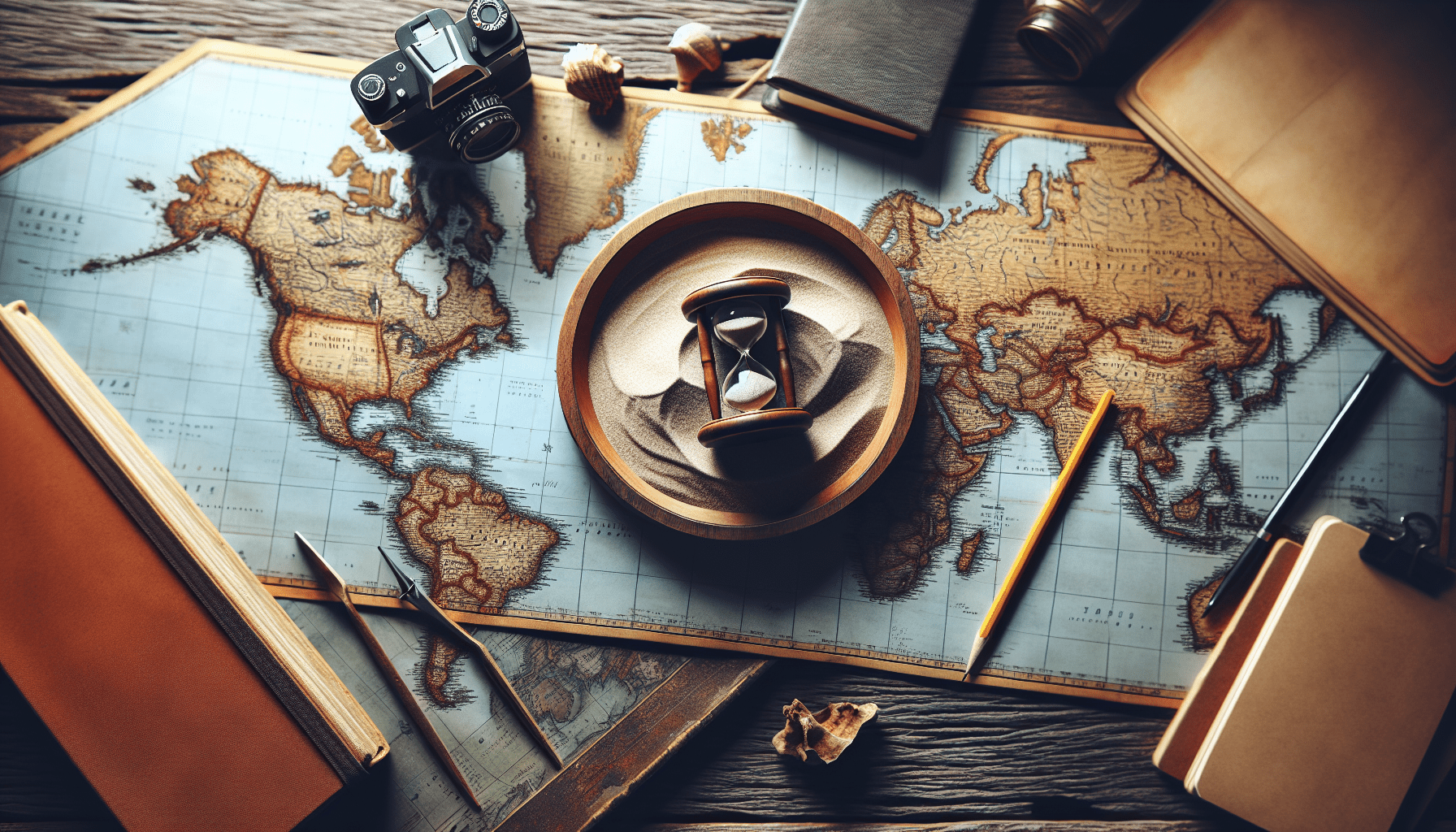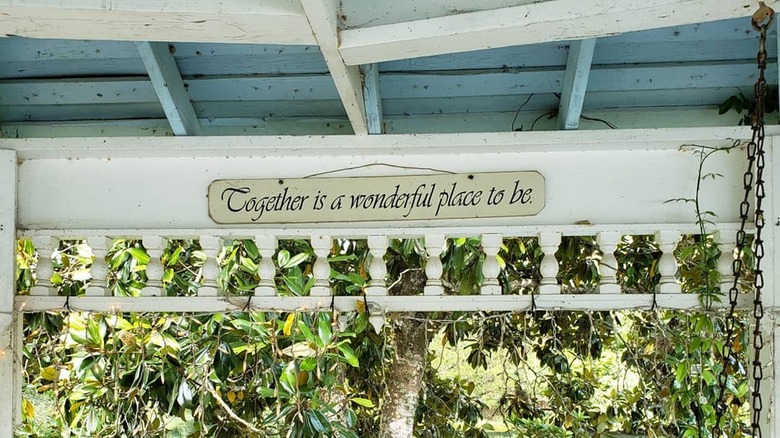Samsonite Freeform 21-Inch Hardside Carry-On Luggage with Spinner Wheels - Hardshell Carry-On Suitcase - TSA, Airline-Approved - Expandable Hard Shell, Smooth Rolling Wheels for Lightweight Travel
$132.26 (as of December 20, 2024 21:41 GMT +00:00 - More infoProduct prices and availability are accurate as of the date/time indicated and are subject to change. Any price and availability information displayed on [relevant Amazon Site(s), as applicable] at the time of purchase will apply to the purchase of this product.)When planning a vacation, it’s easy to get caught up in the excitement of trying to fit in as many activities as possible. However, travel expert Rick Steves offers a simple yet clever tip to avoid disappointment and make the most of your trip: don’t schedule yourself “too tightly.” Steves suggests leaving space in your itinerary for unexpected delays, personal matters, or just a much-needed rest day. For shorter trips, he recommends setting aside one free day per week, while longer trips can benefit from a “vacation within a vacation” consisting of several days. By following this advice, you can simplify your travel itinerary, avoid burnout, and have the flexibility to truly enjoy your experience.
Leave Space in Your Schedule
When planning your vacation, it’s easy to get caught up in the excitement and try to fit in as much as possible. However, jam-packing your schedule can lead to stress and disappointment if unexpected issues arise. That’s why it’s important to leave some space in your schedule for flexibility and relaxation.
Shop These Accessories for a Comfortable Trip
Avoid jam-packing your schedule
Travel expert Rick Steves suggests avoiding overpacking your travel itinerary. Just as you should avoid overpacking your suitcase, you should also avoid overpacking your schedule. Leaving some free time in your schedule allows you to have breathing room for unexpected delays or problems that may arise during your trip.
Allocate one free day per week for shorter trips
During shorter trips, it’s beneficial to allocate one free day per week. This day should be kept completely empty, allowing you to use it as needed. Whether you need to tend to personal matters, rearrange your sightseeing plans, or simply take a rest day, having that extra day can make a big difference in your overall experience.
Schedule a ‘vacation from your vacation’ for longer trips
For longer trips, Rick Steves suggests scheduling a “vacation from your vacation.” This involves blocking off several days in the middle of your trip to give yourself some much-needed time to deal with any problems or challenges that may have arisen. It’s also an opportunity to refresh and rejuvenate your senses, preventing travel burnout. Use this time to explore nearby villages or nature spots, or simply take some time for self-care and relaxation.
Simplifying Your Travel Itinerary
Creating a simple and organized travel itinerary is key to ensuring a stress-free and enjoyable trip. By following a few strategies, you can maximize your time and experience while avoiding feeling overwhelmed.
Make a list of must-see places and optional stops
Start by making a list of the sites, shops, and restaurants that you’re interested in visiting. It’s important to distinguish between must-see places and optional stops. This will help you prioritize and make decisions about what is most important to you.
Have a solid reason for every stop you make
When planning your itinerary, it’s essential to have a solid reason for every stop you make. Just because a site is famous or popular doesn’t mean it has to be on your itinerary. Consider what interests you the most and align your stops with your personal preferences and goals for the trip.
Research ways to beat the crowds and save time
To make the most of your time, research ways to beat the crowds and save precious hours. For popular attractions, booking tickets and reservations in advance can help you avoid long lines. This is especially important for sites that you know will take a significant amount of time to visit, such as large museums. By doing your research, you can find strategies to maximize your time and minimize the stress of waiting in line.
Limit one major attraction per day
When planning your itinerary, it’s important to not overload your schedule with too many major attractions in one day. Each attraction deserves your full attention and time. By limiting yourself to one major attraction per day, you can fully immerse yourself in the experience and allow for flexibility and spontaneity in the rest of your sightseeing.
Benefits of Leaving Space in Your Schedule
Leaving space in your schedule has numerous benefits that can greatly enhance your travel experience. It allows for flexibility, relaxation, and the ability to deal with unexpected circumstances.
Dealing with unexpected problems
No matter how well you plan, unexpected problems can still arise during your travels. By leaving space in your schedule, you have the freedom and flexibility to handle these issues without feeling rushed or stressed. Whether it’s lost luggage, a delayed flight, or an illness, having that extra time can make all the difference in resolving the problem effectively.
Ability to tend to personal matters
While traveling, personal matters may arise that require your attention. Whether it’s checking in with family, attending to work responsibilities, or simply taking care of yourself, having space in your schedule allows you to tend to these matters without sacrificing your travel plans.
Flexibility for sightseeing and exploration
Leaving space in your schedule allows for flexibility in your sightseeing and exploration. It gives you the freedom to discover hidden gems, explore spontaneous opportunities, and deviate from your original plan if something catches your interest. This flexibility enriches your travel experience and allows for unexpected adventures.

Shop These Accessories for a Comfortable Trip
Time for rest and relaxation
Traveling can be exhausting, both physically and mentally. By leaving space in your schedule, you give yourself the opportunity to rest and recharge. Whether it’s taking a leisurely stroll through a park, enjoying a spa day, or simply sitting in a café and people-watching, these moments of relaxation can make your trip more enjoyable and rejuvenating.
Strategies for Booking Tickets and Reservations
Booking tickets and reservations in advance can save you time and prevent the frustration of waiting in long lines. Here are some strategies to consider when planning your travel arrangements.
Book tickets and reservations in advance
For popular attractions, it’s ideal to book tickets and reservations in advance. This can be done online or through a travel agent. By doing so, you can bypass long lines and ensure that you have guaranteed entry to the attractions you want to visit. Research the specific attractions you plan to visit and determine if they offer advanced ticketing options.
Avoid standing in long lines
Standing in long lines can be frustrating and time-consuming. By booking tickets and reservations in advance, you can avoid this hassle and maximize your time at each destination. In addition, some attractions offer fast-track or skip-the-line options for an additional fee. Consider investing in these options if you want to streamline your experience and make the most of your time.
Use online resources to save time
The internet is a valuable resource when it comes to travel planning. Use online platforms and websites to research attractions, compare prices, and make reservations. Many attractions offer discounted rates for online bookings, and you may also find exclusive deals and packages that can help you save money. Take advantage of these resources to simplify the booking process and save time.
How to Optimize Museum Visits
Visiting museums is a common activity for travelers who want to immerse themselves in the culture and history of a destination. However, museum visits can be overwhelming if not properly planned. Here are some tips to optimize your museum visits and make the most of your time.
Limit visits to one large museum per day
Large museums often require a significant amount of time to fully explore. To avoid museum fatigue and ensure that you have enough time to appreciate each exhibit, limit yourself to one large museum per day. This allows you to fully immerse yourself in the museum experience without feeling rushed or overwhelmed.
Allocate enough time per museum visit
When planning your itinerary, allocate enough time for each museum visit. Research the estimated duration for visiting each museum and add some buffer time to account for unforeseen delays or unexpected discoveries. Giving yourself ample time to explore and appreciate each exhibit ensures a more fulfilling and enjoyable experience.
Plan for flexible sightseeing around museum visits
When incorporating museum visits into your itinerary, it’s important to plan for flexible sightseeing around those visits. Museums often have specific opening hours and can take up a significant portion of your day. Plan other sightseeing activities, such as visiting nearby landmarks or exploring the local neighborhood, before or after your museum visit. This allows for a well-rounded and balanced exploration of the destination.
Finding Alternatives to Major Tourist Attractions
While major tourist attractions often deserve their popularity, there are times when it’s beneficial to seek alternatives. Here are some strategies for finding hidden gems and escaping the crowds.
Consider visiting nearby villages or nature spots
Instead of focusing solely on major tourist attractions, consider venturing off the beaten path and exploring nearby villages or nature spots. These destinations often offer a more authentic and intimate experience, away from the crowds. You’ll have the opportunity to interact with locals, immerse yourself in the natural beauty of the surroundings, and discover hidden gems that may not be as well-known.
Escape the major tourism hubs
Major tourism hubs are often crowded and bustling with tourists. While it’s natural to want to visit these iconic locations, it’s also important to take a break and explore quieter areas. Seek out neighborhoods and districts that are less touristy but still offer unique cultural experiences and attractions. This allows you to experience the destination from a different perspective and connect with the local culture.
Take time for self-care and relaxation
Traveling can be exhilarating, but it can also be exhausting. It’s important to listen to your body’s needs and take time for self-care and relaxation. Schedule breaks in your itinerary to rest, recharge, and indulge in activities that rejuvenate you. Whether it’s a spa day, a leisurely walk through a park, or simply sitting in a café and people-watching, prioritize your well-being to ensure a more enjoyable and balanced travel experience.
Tips for Time Management
Time management is crucial when it comes to travel. Making the most of your limited time requires careful planning and organization. Here are some tips to help you manage your time effectively and make the most of your trip.

Prioritize must-see places and activities
When planning your itinerary, prioritize the must-see places and activities that are important to you. By identifying your top priorities, you can ensure that you allocate enough time and energy to fully experience these attractions. This ensures that you don’t miss out on the highlights of your destination and allows for a more fulfilling experience.
Create a realistic schedule
While it’s tempting to try to fit in as much as possible, it’s important to create a realistic schedule. Overloading your itinerary can lead to stress, exhaustion, and disappointment. Consider the logistics of travel, such as transit times and opening hours, and factor in breaks and rest periods. A well-balanced and realistic schedule allows for a more enjoyable and relaxed travel experience.
Leave buffer time for unexpected delays
No matter how meticulously you plan, unexpected delays can still occur. Leave some buffer time in your schedule to account for these delays. This ensures that you have some flexibility and can adapt to unforeseen circumstances without feeling rushed or stressed. Having buffer time also allows for spontaneous detours or discoveries along the way.
Be open to last-minute changes
While it’s important to have a plan, it’s equally important to be open to last-minute changes. Travel often involves unexpected opportunities and recommendations from locals or fellow travelers. Embrace the spontaneity and be willing to deviate from your original plan if something piques your interest. This flexibility allows for a more enriching and fluid travel experience.
Avoiding Travel Burnout
Traveling can be exhausting, both physically and mentally. To ensure that you don’t experience travel burnout, it’s important to incorporate breaks and relaxation activities into your itinerary. Here are some tips to help you avoid burnout and enjoy a more balanced trip.
Take breaks during your trip
Schedule breaks throughout your trip to give yourself time to rest and recharge. This can be as simple as taking a leisurely walk, sitting in a park, or enjoying a peaceful meal. By incorporating these breaks into your itinerary, you give yourself the opportunity to slow down and appreciate the moment.
Schedule rest days or relaxation activities
In addition to regular breaks, schedule specific rest days or relaxation activities. These can be full days dedicated to self-care and relaxation, or they can be planned activities that promote tranquility and rejuvenation. Consider indulging in a spa day, practicing yoga, or simply spending a day at the beach. These rest days or activities allow you to recharge your energy and maintain a positive mindset throughout your trip.
Listen to your body’s needs
Pay attention to your body’s needs and limitations. If you’re feeling tired or overwhelmed, it’s important to listen to those cues and take the necessary steps to rest and recharge. This might mean skipping an activity, adjusting your schedule, or simply taking a day off to do nothing. By prioritizing your well-being, you can avoid burnout and enjoy a more fulfilling travel experience.
Benefits of Flexibility in Itinerary
Flexibility in your travel itinerary offers numerous benefits that can greatly enhance your trip. By being open to change and embracing spontaneous opportunities, you can create unforgettable and unique experiences.
Discover hidden gems while exploring spontaneously
When you allow for flexibility in your itinerary, you open yourself up to discovering hidden gems and unexpected treasures. Spontaneous detours or recommendations from locals can lead you to off-the-beaten-path destinations that are not in the guidebooks. These hidden gems often provide a more authentic and immersive travel experience, allowing you to truly connect with the culture and essence of a place.
Adjust plans based on weather or local recommendations
By being flexible, you can adapt your plans based on the weather or local recommendations. If it’s raining, you can visit indoor attractions or museums instead of outdoor activities. If a local suggests a lesser-known attraction or event, you can adjust your itinerary to incorporate it. These adjustments allow you to make the most of your time and experience the destination in the best possible way.
Embrace a more relaxed and stress-free travel experience
A rigid and tightly scheduled itinerary can lead to stress and a feeling of constantly being rushed. By embracing flexibility, you allow yourself to have a more relaxed and stress-free travel experience. You can take your time, linger in a café, or spend an extra day in a place that captivates you. This sense of ease and freedom enhances your overall enjoyment and allows for a more immersive experience.
Putting Rick Steves’ Itinerary Tip into Practice
Implementing Rick Steves’ itinerary tip can greatly enhance your travel experience. By evaluating your current travel schedule and making adjustments, you can enjoy a more flexible and enjoyable trip.
Evaluate your current travel schedule
Start by evaluating your current travel schedule. Take a close look at your itinerary and consider if it is too packed or lacks breathing room. Reflect on your priorities and the purpose of your trip. Are there any areas where you feel overwhelmed or stressed? Identifying these areas is the first step towards creating a more balanced and enjoyable itinerary.
Identify areas where you can create space
Once you have evaluated your current schedule, identify areas where you can create space. This can involve canceling or rearranging activities, allowing for more free time between attractions, or incorporating rest days into your itinerary. Be mindful of your personal preferences and energy levels, and adjust accordingly to ensure a more balanced and relaxed experience.
Adjust your itinerary accordingly
Based on the areas you identified for creating space, make the necessary adjustments to your itinerary. This might involve rescheduling certain activities or replacing them with more leisurely and relaxing options. Be flexible and open to change during this process, as it will ultimately lead to a more enjoyable and fulfilling trip.
Enjoy a more flexible and enjoyable trip
By implementing Rick Steves’ itinerary tip and creating space in your schedule, you can enjoy a more flexible and enjoyable trip. Embrace the freedom to explore spontaneously, take breaks when needed, and linger in places that captivate you. Remember that travel is about immersing yourself in new experiences and embracing the unexpected. With a more relaxed and flexible itinerary, you can truly make the most of your journey.
Shop These Accessories for a Comfortable Trip






